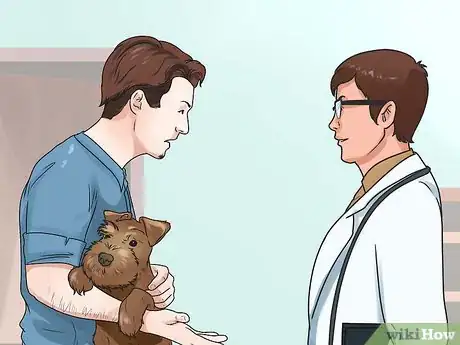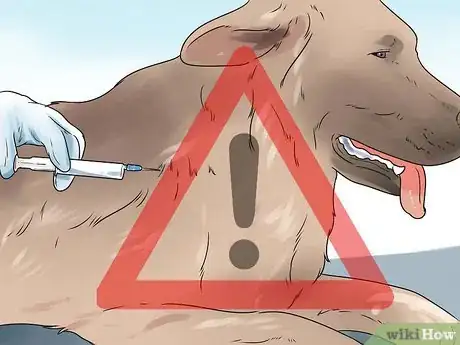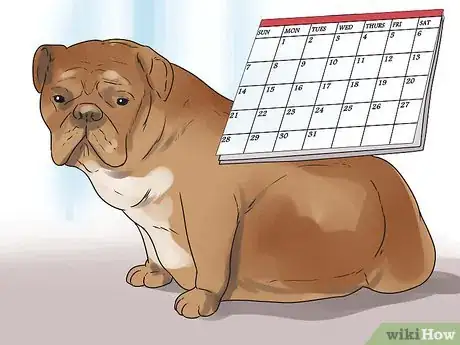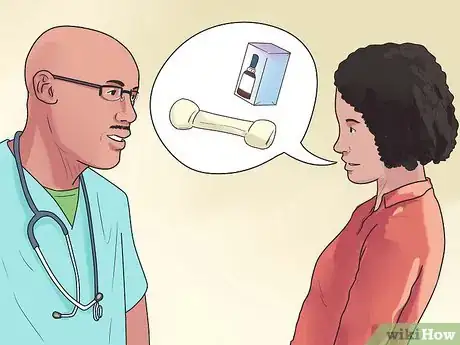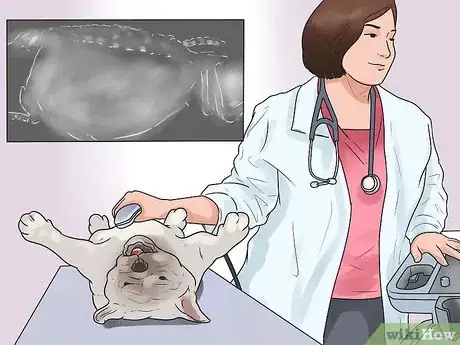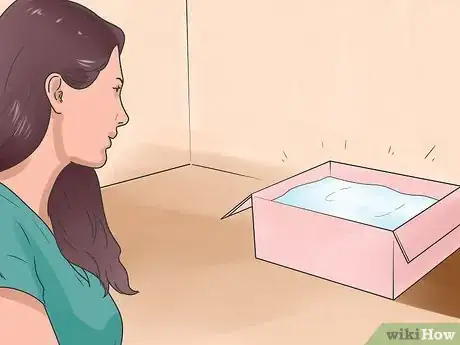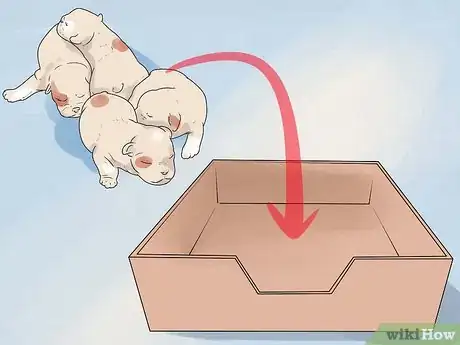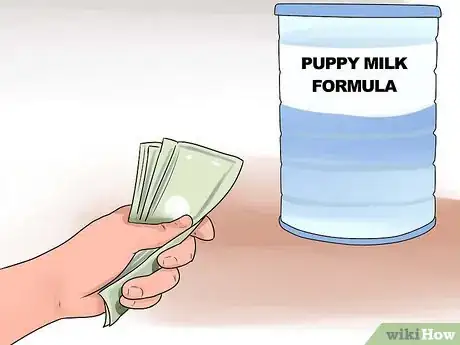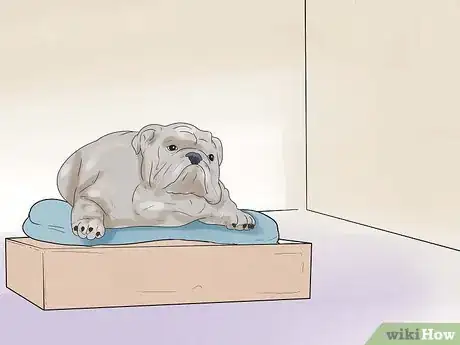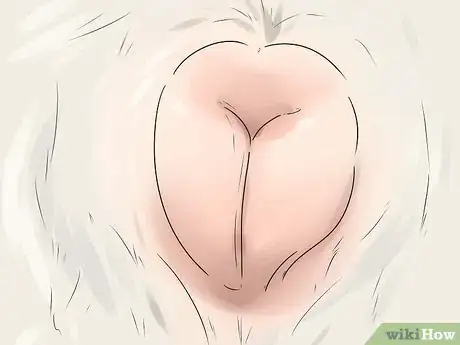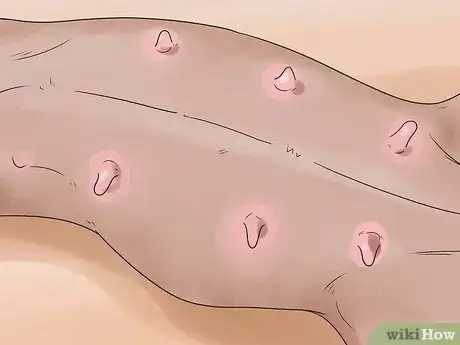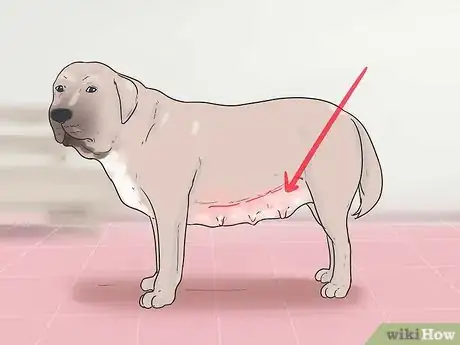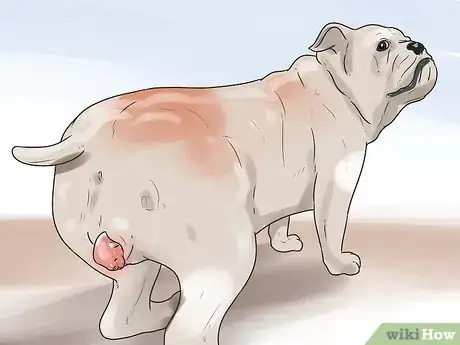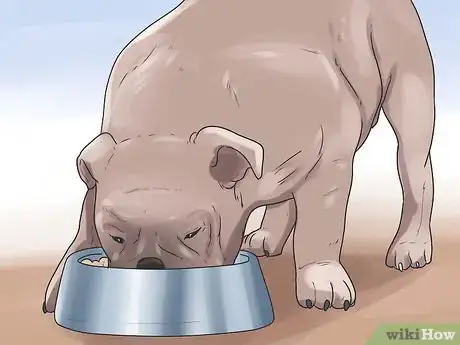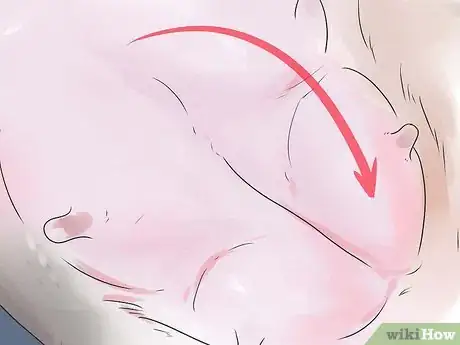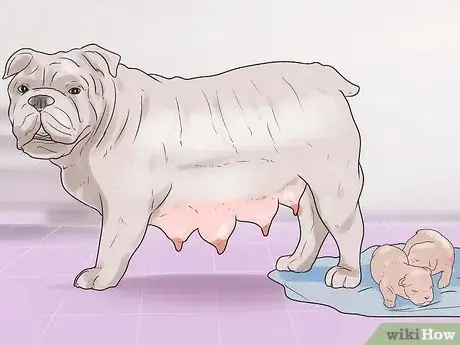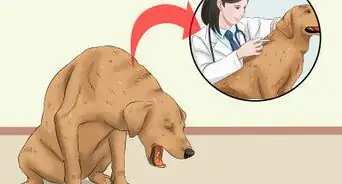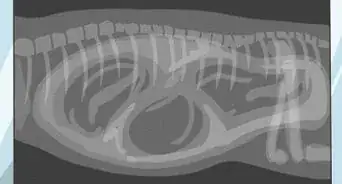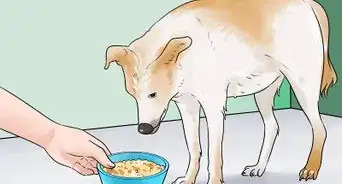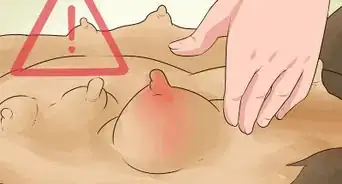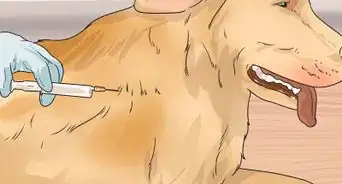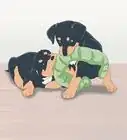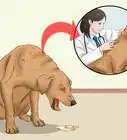This article was co-authored by Jeannie McElroy. Jeannie McElroy is a Canine Enthusiast & Breeder of Champion European Boxers under the kennel name Big Mac Boxers. With over 25 years of experience, she specializes in training, working, showing, and titling her dogs in many different types of ring sports. Jeannie is an AKC Evaluator and titles therapy dogs for Therapy Pets Unlimited. She is also a member of the AKC Bred with Heart, Greater Cincinnati Boxer Club, and US-BOX Working Boxer Association. She is passionate about the breed as she adores rearing the next generation through selectively breeding only health-tested dogs from pedigrees known to have quality genetics.
wikiHow marks an article as reader-approved once it receives enough positive feedback. This article received 28 testimonials and 100% of readers who voted found it helpful, earning it our reader-approved status.
This article has been viewed 1,206,736 times.
When labor begins, a dog's instincts will almost always take over -- you shouldn't have to intervene at all. Nonetheless, if your dog is pregnant, you should know what to expect during labor and how to help if necessary. Certain pure breeds can have more problems during the birth process. If you have a bulldog or a pug, for example, it’s crucial to prepare. For all breeds, be sure to talk to your veterinarian and bring your pregnant dog in for a check-up.
Steps
Getting Ready
-
1Take your dog to the veterinarian. If your dog’s pregnancy is planned, take her to the veterinarian for a check-up before breeding her. Bring her in again about 30 days into the pregnancy.[1] If the pregnancy wasn’t planned, take her to the vet as soon as you find out she’s pregnant.
- If you plan to breed your dog, it’s recommended that you wait until she’s at least 24 months old. By that point she will be mature enough for any relevant medical problems to become apparent.
- Some dog breeds may be prone to genetic conditions like dental problems, dislocating patellas, hip dysplasia, spine problems, allergies, heart conditions, and/r behavioral problems. It’s important to be aware of these conditions before breeding your dog.
-
2Be careful of giving your pregnant dog medication or vaccines. Unless directly instructed by your vet, you should not give your dog medications unsafe for pregnancy. You also shouldn’t have her vaccinated.[2]
- Your dog should have been vaccinated before she became pregnant so she can pass the antibodies on to her pups. But if not, don’t vaccinate her while pregnant, as some vaccines can be harmful to developing fetuses.
- If using flea control, be sure to use a product that’s safe for use on pregnant dogs.
- Do make sure that your dog is on a deworming program. An untreated mother can pass on roundworms, hookworms, or heartworms to her puppies.
Advertisement -
3Understand the normal progression of pregnancy. The average gestation period for a dog is between 58 and 68 days. Try to accurately pinpoint when conception occurred so you can anticipate labor accordingly.
- By 45 days into the pregnancy, your vet can use x-rays to detect the number of puppies in the litter.
- You may also notice nesting behavior and a tendency to want to withdraw or retreat; this is normal and to be expected.
-
4Discuss proper nutrition with your veterinarian. Most pregnant dogs who are not overweight should eat puppy food during the last third to the last half of pregnancy.
- Puppy food typically has more calories than regular adult food, which the mother will need in order to pass on nutrition to the fetuses.
- Do not supplement her diet with extra calcium unless instructed by your veterinarian. Milk fever, or eclampsia, is common for small breed dogs a few weeks after giving birth. It’s more likely to occur if the mother receives an over-supplementation of calcium during pregnancy.
-
5Have your veterinarian take x-rays of the puppies. The vet will be able to count the number of puppies in the litter using x-rays by 45 days into the pregnancy.
- If your dog is a large breed like a German shepherd or Labrador, as many as 10 puppies is common.
- If your dog is a small breed like a Chihuahua or Shih Tzu, 3 or 4 puppies in a litter would be plenty.
- If the vet can see only one or two puppies, it may pose problems at the time of birth. Fewer puppies mean the puppies will be larger and may be too big to pass through the birth canal naturally. In such cases, a planned C-section is often the best option.
- Though a planned C-section will be more costly, it will still be cheaper than an emergency C-section. So plan ahead.
-
6Prepare a nesting area. About a week before your dog is due to begin labor, set up a nesting box in a quiet, private area where she can go to give birth.
- Help your dog feel comfortable by setting up a cozy box in an area away from other pets.
- A box or kiddy pool with bedding like clean old towels or blankets works well.
-
7Arrange for homes for the puppies. As soon as you know your dog’s pregnant, whether it was planned or not, begin arranging for homes for the puppies.
- If you aren’t able to find homes for all the puppies, be prepared to keep them yourself until you can find them a home. Thousands of dogs end up in over-crowded shelters because irresponsible owners breed their dogs without providing homes for the puppies. Don’t be part of the problem.
- Prepare to live with puppies for at least 8 weeks before they leave your house for new homes. In certain states like California, it’s illegal to adopt out a puppy younger than 8 weeks of age.
- To ensure the puppies go to good homes, have an application process and ask questions of the interested parties. It’s also a good idea to charge a modest amount for each puppy. This ensures the interested parties are serious about and committed to adopting the puppy.
-
8Buy puppy formula ahead of time. Newborn puppies will need to eat every 2-4 hours around the clock. Have formula on hand in case a puppy has trouble nursing.
- You can buy puppy formula at most pet supply stores.
-
9Isolate the mother three weeks before expected delivery. To protect the mother and her puppies from contracting illness or disease like canine herpes, confine her away from all other dogs in the three weeks leading up to her expected delivery date.[3]
- It’s also highly advisable to keep the mother away from other dogs for three weeks following the delivery.
Helping During Labor
-
1Watch carefully for signs of labor. There will be several signs to help you anticipate when labor is imminent; watch for them so you can be prepared when your dog enters labor.
- Her teats will appear enlarged when your dog is close to giving birth because her milk is coming in. This can happen within a few days or as labor begins, so watch closely.
- The vulva will start to get more relaxed a few days before labor.
- The dog’s temperature will also drop a degree or so about 24 hours before labor. Take her temperature every morning for the last week or two of pregnancy to get an idea of her normal temperature. To take her temperature, lubricate a rectal thermometer and insert it about half an inch. Leave the thermometer in for about three minutes to get an accurate reading. Her normal temperature will likely range between 101 and 102.5 degrees Fahrenheit. When you notice a drop of a degree or more, it’s a likely sign she’ll go into labor in 24 hours or less.
- In the early stages of labor, your dog may pant, whimper, move around as though uncomfortable, or hide. She will probably not want to eat, but be sure to offer her water, though she may also not drink.
-
2Watch for contractions. When she has a contraction, it will be easy to identify--it will appear as a sort of wave across her belly.
- If you see contractions and suspect she is in labor, let her have access to her nesting area and monitor her from afar. Many dogs will give birth during the night to have ultimate privacy. You don’t need to hover, but you should start paying attention to the timing of contractions and the delivery of puppies.
-
3Monitor the birthing. Again, observe from a respectful distance and don’t intervene unless necessary.
- You will notice her contractions become more frequent and/or pronounced as she gets closer to delivery. She may stand up, which is fine--don’t try to force her to lie down.
-
4Pay attention to each birth. As she begins to deliver the puppies, keep a close eye on each birth and watch for warning signs of problems.
- The puppies may be born either tail or head first; both are normal.
- She may yelp or whimper as the pup comes out, which is to be expected. But if your dog appears to be in extreme or abnormal pain, call your veterinarian immediately.
- Usually, a pup will appear every thirty minutes or so, after ten to thirty minutes of forceful straining (though she may go as long as four hours between pups). Call your veterinarian If no pup appears within 30-60 minutes of hard contractions. Also call your vet if it’s been over four hours since the last delivery and you know there are still unborn puppies.
-
5Monitor each pup after delivery. Keep an eye on each pup after it’s born and watch for signs of problems, though you likely won’t need to intervene.
- When the mother delivers, the pup will be in a sac; she should tear it open and then chew off the umbilical cord and lick the pup. It's usually best to let her do this without human assistance because it’s part of her bonding experience with the puppies.
- If she doesn’t tear open the sac within about two to four minutes, however, you should gently open the sac yourself with a clean hand. Clear all fluid away from the pup’s nose and mouth, then rub the pup vigorously but gently to stimulate breathing.
- Make sure the puppies are warm, but, again, don’t intervene unless you see a problem. Neonatal death (ie, stillbirths or pups that survive only a few hours or days) is relatively common for most littered mammals, so be prepared for this possibility. If you see a newborn pup that is not breathing, try to clear the mouth and stimulate the puppy by rubbing its body to see if you can get it breathing.
Caring for Your Dog After Labor
-
1Continue feeding her high-calorie food. Provide her with a high-calorie diet (like puppy food) to help her stay nourished while nursing.[4]
- It’s important for both mother and puppies to receive enough nutrition. This helps the mother can recover and helps the puppies develop.
-
2Monitor the mother in the weeks following birth. Dogs are susceptible to certain illnesses and complications after giving birth.[5]
- Watch for signs of metritis (an inflamed uterus), which include fever, foul-smelling discharge, listlessness, loss of appetite, decreased milk production, and disinterest in the puppies.
- Watch for signs of eclampsia, which can include nervousness, restlessness, disinterest in the puppies, and a stiff, pained gait. If left untreated, eclampsia can progress into muscle spasms, inability to stand, fever, and seizures.
- Watch for signs of mastitis (inflammation of the breasts), which can include red, hardened, or painful mammary glands. The mother may try to discourage the puppies from nursing, but you should urge them to continue doing so. It will help flush out the infection without causing the puppies any harm.
-
3Expect things to go well but be prepared if there are complications. Watch out that the mother doesn’t stop caring for the pups or show signs of feeling ill after delivery.[6]
- If that happens, call your vet and bring her in if necessary.
Expert Q&A
-
QuestionCan I leave my dog alone with her newborn puppies?
 Jeannie McElroyJeannie McElroy is a Canine Enthusiast & Breeder of Champion European Boxers under the kennel name Big Mac Boxers. With over 25 years of experience, she specializes in training, working, showing, and titling her dogs in many different types of ring sports. Jeannie is an AKC Evaluator and titles therapy dogs for Therapy Pets Unlimited. She is also a member of the AKC Bred with Heart, Greater Cincinnati Boxer Club, and US-BOX Working Boxer Association. She is passionate about the breed as she adores rearing the next generation through selectively breeding only health-tested dogs from pedigrees known to have quality genetics.
Jeannie McElroyJeannie McElroy is a Canine Enthusiast & Breeder of Champion European Boxers under the kennel name Big Mac Boxers. With over 25 years of experience, she specializes in training, working, showing, and titling her dogs in many different types of ring sports. Jeannie is an AKC Evaluator and titles therapy dogs for Therapy Pets Unlimited. She is also a member of the AKC Bred with Heart, Greater Cincinnati Boxer Club, and US-BOX Working Boxer Association. She is passionate about the breed as she adores rearing the next generation through selectively breeding only health-tested dogs from pedigrees known to have quality genetics.
Certified Dog Breeder That's not a good idea. Try to watch her for the first 48 hours after giving birth, but be careful to not "help" the dog too much. Do your best to just sit there next to her and relax, since your calmness can make the dog calmer. If you're a nervous wreck, she's going to be a nervous wreck.
That's not a good idea. Try to watch her for the first 48 hours after giving birth, but be careful to not "help" the dog too much. Do your best to just sit there next to her and relax, since your calmness can make the dog calmer. If you're a nervous wreck, she's going to be a nervous wreck. -
QuestionHow do you know when the mother has delivered all her puppies?
 Pippa Elliott, MRCVSDr. Elliott, BVMS, MRCVS is a veterinarian with over 30 years of experience in veterinary surgery and companion animal practice. She graduated from the University of Glasgow in 1987 with a degree in veterinary medicine and surgery. She has worked at the same animal clinic in her hometown for over 20 years.
Pippa Elliott, MRCVSDr. Elliott, BVMS, MRCVS is a veterinarian with over 30 years of experience in veterinary surgery and companion animal practice. She graduated from the University of Glasgow in 1987 with a degree in veterinary medicine and surgery. She has worked at the same animal clinic in her hometown for over 20 years.
Veterinarian Once all the puppies are safely delivered, the mother settles down to feeding and licking her new brood. She should seem alert (but tired) and be interested in food and water placed near her. However, some female dogs stop laboring even when they still have pups inside. This can be difficult to spot, especially if you don't know how many the dog was carrying. If she is restless, not hungry, feverish, panting heavily, or has a yellow-green discharge, then she must see the vet.
Once all the puppies are safely delivered, the mother settles down to feeding and licking her new brood. She should seem alert (but tired) and be interested in food and water placed near her. However, some female dogs stop laboring even when they still have pups inside. This can be difficult to spot, especially if you don't know how many the dog was carrying. If she is restless, not hungry, feverish, panting heavily, or has a yellow-green discharge, then she must see the vet. -
QuestionHow long does it take for a dog to have puppies after the water breaks?
 Pippa Elliott, MRCVSDr. Elliott, BVMS, MRCVS is a veterinarian with over 30 years of experience in veterinary surgery and companion animal practice. She graduated from the University of Glasgow in 1987 with a degree in veterinary medicine and surgery. She has worked at the same animal clinic in her hometown for over 20 years.
Pippa Elliott, MRCVSDr. Elliott, BVMS, MRCVS is a veterinarian with over 30 years of experience in veterinary surgery and companion animal practice. She graduated from the University of Glasgow in 1987 with a degree in veterinary medicine and surgery. She has worked at the same animal clinic in her hometown for over 20 years.
Veterinarian Each puppy is contained within their own birth sack, so the mother's 'waters breaking' only applies to one puppy at a time. Once the water breaks for that puppy, she should strain actively and the puppy should appear within 20 minutes.
Each puppy is contained within their own birth sack, so the mother's 'waters breaking' only applies to one puppy at a time. Once the water breaks for that puppy, she should strain actively and the puppy should appear within 20 minutes.
Things You’ll Need
- Latex examination gloves (available at most drug stores)
- Clean towels and old blankets
- A sturdy box
- Your vet’s numbers (including an emergency number) on speed-dial
- Puppy formula (in case the puppies can’t nurse)
Warnings
- A female dog that is not spayed has the potential to get a uterine infection called a pyometra after going into heat. This is a serious and potentially life threatening condition that requires immediate veterinary care. Watch your dog after each heat cycle to be sure she isn’t showing signs of illness like vomiting, loss of appetite, or excessive thirst.[7]⧼thumbs_response⧽
References
- ↑ http://www.veterinarypartner.com/Content.plx?A=1459
- ↑ http://www.veterinarypartner.com/Content.plx?A=1459
- ↑ http://www.veterinarypartner.com/Content.plx?P=A&S=0&C=0&A=1459
- ↑ http://www.veterinarypartner.com/Content.plx?P=A&S=0&C=0&A=1459
- ↑ http://www.veterinarypartner.com/Content.plx?P=A&A=678&S=0&EVetID=0
- ↑ http://www.veterinarypartner.com/Content.plx?P=A&A=678&S=0&EVetID=0
- ↑ http://www.veterinarypartner.com/Content.plx?P=A&S=0&C=0&A=603
- ↑ http://www.purina.co.uk/content/your-dog/life-changes/pregnancy-in-dogs/labour-and-giving-birth-for-dogs
About This Article
To help your pregnant dog deliver puppies, take your dog to the veterinarian for a check up and X-rays of the puppies, and prepare a nesting area with old towels and blankets for the dog. Around the dog's due date, watch for signs of labor, such as enlarged teats, a drop in temperature, and panting or whimpering. Observe the dog's stomach for contractions, which will look like a wave across the belly area, and watch the birth from a few feet away. Keep in mind that the dog's instincts will take over and you shouldn't have to intervene. For tips from our veterinarian reviewer on caring for a dog after labor, scroll down!
